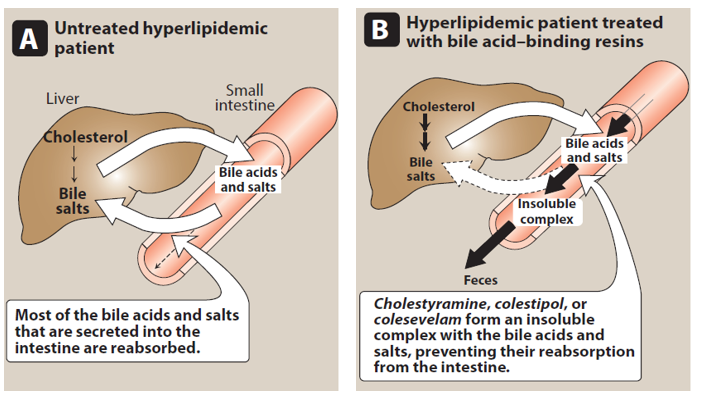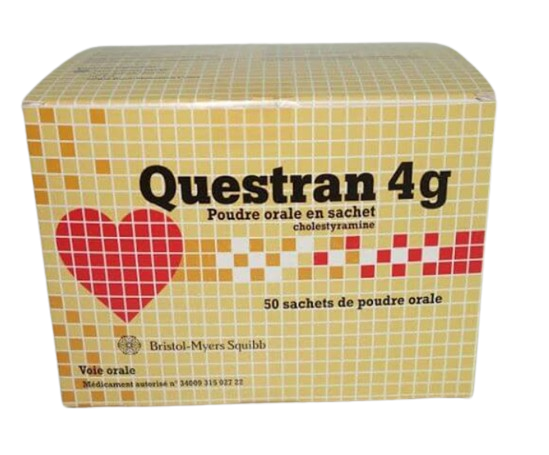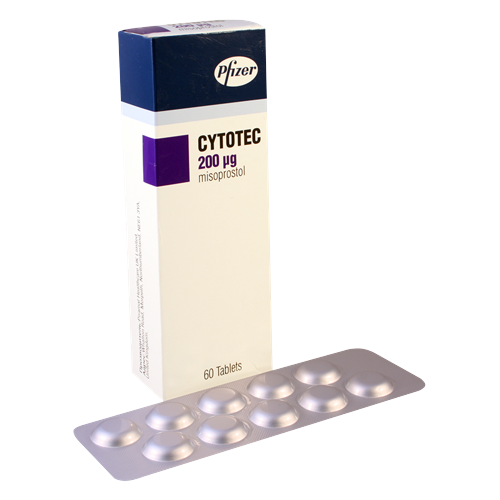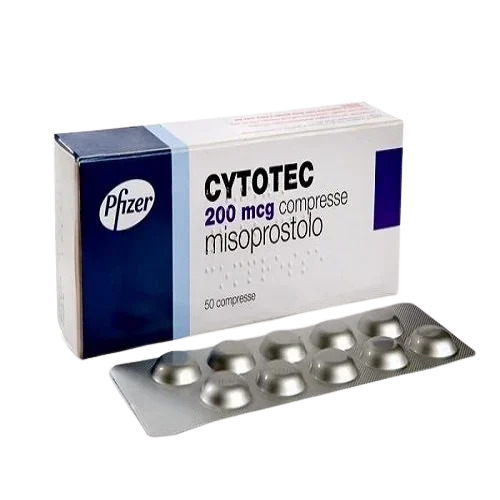Questran Sachet 4g 50’ct Imported in Pakistan
Mechanism of Action
Questran (Cholestyramine) works by binding bile acids in the intestine, preventing their reabsorption and promoting their excretion, which helps lower cholesterol levels in the blood.
Approved Uses
- Hypercholesterolemia: To decrease high levels of cholesterol in the blood.
- Pruritus associated with partial biliary obstruction: To relieve itching caused by a blockage in the bile ducts.
- Diarrhea associated with ileal resection, Crohn’s disease, vagotomy and diabetic vagal neuropathy: To provide relief.
- Radiation-induced diarrhea: For management.
Dosage
- After initial introduction over a 3-4 week period, 3 to 6 sachets per day, either as a single daily dose or in divided doses up to four times daily.
- Dosage may be modified according to response and can be increased to 9 sachets per day if necessary.
Side Effects
- Constipation, diarrhea, stomach pain, nausea, loss of appetite, bloating, gas, irritation of the tongue, and itching or irritation around the rectal area.
- Chronic use may be associated with increased bleeding tendency due to hypoprothrombinaemia associated with Vitamin K deficiency.
- Prolonged use in high doses may produce hyperchloremic acidosis, especially in younger and smaller patients or those with renal impairment.
Interactions
- Mycophenolate Mofetil: Severe interaction
- Teriflunomide: Severe interaction
- Digoxin: Moderate interaction
- Warfarin: Moderate interaction
- Atorvastatin: Moderate interaction
Clinical Studies
- In the LRC-CPPT study, hypercholesterolemic subjects treated with Questran had mean reductions in total and LDL-C exceeding diet and placebo by 7.2% and 10.4%, respectively.
- Questran monotherapy has been demonstrated to slow progression and promote regression of atherosclerotic lesions in the coronary arteries of patients with coronary artery disease.
-

-
Original price was: ₨16,000.00.₨14,999.00Current price is: ₨14,999.00.
Description
Mechanism of Action
Questran (Cholestyramine) works by binding bile acids in the intestine, preventing their reabsorption and promoting their excretion, which helps lower cholesterol levels in the blood.
Approved Uses
- Hypercholesterolemia: To decrease high levels of cholesterol in the blood.
- Pruritus associated with partial biliary obstruction: To relieve itching caused by a blockage in the bile ducts.
- Diarrhea associated with ileal resection, Crohn’s disease, vagotomy and diabetic vagal neuropathy: To provide relief.
- Radiation-induced diarrhea: For management.
Dosage
- After initial introduction over a 3-4 week period, 3 to 6 sachets per day, either as a single daily dose or in divided doses up to four times daily.
- Dosage may be modified according to response and can be increased to 9 sachets per day if necessary.
Side Effects
- Constipation, diarrhea, stomach pain, nausea, loss of appetite, bloating, gas, irritation of the tongue, and itching or irritation around the rectal area.
- Chronic use may be associated with increased bleeding tendency due to hypoprothrombinaemia associated with Vitamin K deficiency.
- Prolonged use in high doses may produce hyperchloremic acidosis, especially in younger and smaller patients or those with renal impairment.
Interactions
- Mycophenolate Mofetil: Severe interaction
- Teriflunomide: Severe interaction
- Digoxin: Moderate interaction
- Warfarin: Moderate interaction
- Atorvastatin: Moderate interaction
Clinical Studies
- In the LRC-CPPT study, hypercholesterolemic subjects treated with Questran had mean reductions in total and LDL-C exceeding diet and placebo by 7.2% and 10.4%, respectively.
- Questran monotherapy has been demonstrated to slow progression and promote regression of atherosclerotic lesions in the coronary arteries of patients with coronary artery disease.
Key Benefits of Questran
- Cholesterol Reduction: Questran is primarily used to lower high levels of cholesterol in the blood, particularly effective for patients with hypercholesterolemia, especially Fredrickson’s Type II.
- Pruritus Relief: It provides relief from itching associated with partial biliary obstruction and primary biliary cirrhosis.
- Management of Diarrhea: Questran helps manage diarrhea related to conditions such as ileal resection, Crohn’s disease, vagotomy, and diabetic vagal neuropathy.
- Radiation-Induced Diarrhea: It is also used to alleviate diarrhea caused by radiation therapy.
- Primary Prevention of Coronary Heart Disease: It is indicated for men aged 35 to 59 with primary hypercholesterolemia who have not responded to dietary measures.
Key Ingredients of Questran
- Active Ingredient: Each sachet contains 4 g of anhydrous colestyramine, which is a bile acid binding resin that works by binding bile acids in the intestine, preventing their reabsorption and promoting their excretion.
- Excipients:
- Aspartame: 30 mg per sachet, a source of phenylalanine, which may be harmful for individuals with phenylketonuria (PKU).
- Propylene Glycol: 32.5 mg per sachet, used as an excipient in the formulation.
 ColestyramineBile acid sequestrantMoreFunctionBinds bile in the gastrointestinal tract to prevent its reabsorptionTrade namesQuestran, Questran Light, Cholybar, OlestyrRoutes of administrationBy mouthQuestran (Cholestyramine) works by binding bile acids in the intestine, preventing their reabsorption and promoting their excretion, which helps lower cholesterol levels in the blood.The mechanism of action involves:
ColestyramineBile acid sequestrantMoreFunctionBinds bile in the gastrointestinal tract to prevent its reabsorptionTrade namesQuestran, Questran Light, Cholybar, OlestyrRoutes of administrationBy mouthQuestran (Cholestyramine) works by binding bile acids in the intestine, preventing their reabsorption and promoting their excretion, which helps lower cholesterol levels in the blood.The mechanism of action involves:- Cholestyramine, an anion exchange resin, binds to bile acids in the intestine, forming an insoluble complex that is excreted in the feces.
- This binding prevents the reabsorption of bile acids from the intestine back into the enterohepatic circulation.
- The decreased reabsorption of bile acids leads to an increased conversion of cholesterol to bile acids in the liver, which lowers the overall cholesterol levels in the body.
- Cholestyramine also interferes with the enterohepatic circulation of certain drugs, potentially reducing their absorption.

Mechanism of Interaction with Bile Acids
- Binding of Bile Acids: Questran is classified as a bile acid sequestrant. It binds to bile acids in the intestine, forming an insoluble complex that cannot be absorbed. This binding occurs in the gastrointestinal tract after bile acids are secreted into the intestine as part of the digestive process.
- Prevention of Reabsorption: Normally, bile acids are reabsorbed in the ileum (the last part of the small intestine) and returned to the liver through the enterohepatic circulation. By binding to these bile acids, Questran prevents their reabsorption, leading to their elimination in feces.
- Increased Cholesterol Conversion: As bile acids are lost through feces, the liver compensates for this loss by converting more cholesterol into bile acids. This process reduces the levels of cholesterol in the bloodstream, as the liver utilizes circulating cholesterol to synthesize new bile acids.
- Reduction of Cholesterol Levels: The overall effect of this mechanism is a decrease in serum cholesterol levels, particularly low-density lipoprotein (LDL) cholesterol, which is often referred to as “bad” cholesterol. This reduction can help lower the risk of cardiovascular diseases.
- Relief from Itching: In patients with liver disease, the accumulation of bile acids can lead to itching. By binding these bile acids in the intestine and preventing their reabsorption, Questran helps eliminate excess bile acids from the body, thereby alleviating pruritus.
- Impact on Drug Absorption: Questran can also bind to certain medications, reducing their absorption. It is recommended to take other medications at least 1 hour before or 4 to 6 hours after taking Questran to avoid interactions that may diminish their effectiveness .
Questran (Cholestyramine) can generally be used during pregnancy, but with some precautions:
- Safety has not been fully established, so the potential benefits should outweigh the risks.
- Questran is a bile acid sequestrant that does not enter the mother’s bloodstream. It is considered acceptable to use during pregnancy.
- However, Questran may interfere with the absorption of fat-soluble vitamins (A, D, E, K). Regular prenatal vitamin supplementation may not be adequate, so additional monitoring may be needed.
- Questran is considered safe to take for conditions like diarrhea associated with Crohn’s disease or radiation therapy during pregnancy.
- For women taking Leflunomide, a medication known to cause birth defects, Questran may be used to help “wash out” the drug before attempting pregnancy.
Questran (Cholestyramine) is generally considered acceptable for use while breastfeeding, but caution is recommended. Here are the key points regarding its use during lactation:
- Minimal Absorption: Questran is a nonabsorbable resin that does not enter the mother’s bloodstream, meaning it is unlikely to pass into breast milk. This characteristic makes it safer for breastfeeding mothers compared to many other medications.
- Nutrient Absorption: While Questran does not significantly affect the infant through breast milk, it can interfere with the absorption of fat-soluble vitamins (A, D, E, K) in the mother. This interference can potentially impact the nutritional status of both the mother and the breastfeeding infant.
- Consultation with Healthcare Provider: It is advisable for breastfeeding mothers to consult their healthcare provider before starting Questran to ensure that it is appropriate for their specific situation and to discuss any necessary vitamin supplementation.
- Monitoring: Regular monitoring may be necessary to ensure that the breastfeeding infant is receiving adequate nutrition and to address any potential deficiencies resulting from the mother’s use of Questran.
Key Precautions for Using Questran
- Allergies: Do not use Questran if you have a known allergy to cholestyramine or any of its excipients, such as aspartame or propylene glycol.
- Biliary Obstruction: Questran should not be used in patients with complete biliary obstruction, as it requires bile acids to be effective.
- Gastrointestinal Issues: Caution is advised for individuals with a history of chronic constipation or gastrointestinal blockages.
- Drug Interactions: Other medications should be taken at least 1 hour before or 4 to 6 hours after taking Questran to avoid interference with absorption.
- Vitamin Absorption: Questran can affect the absorption of fat-soluble vitamins (A, D, E, K). Supplementation may be necessary, especially during pregnancy and breastfeeding.
- Dental Health: The powder can adhere to teeth; therefore, good dental hygiene is essential to prevent tooth decay and enamel erosion.
- Pregnancy and Breastfeeding: Consult a healthcare provider before using Questran if you are pregnant or breastfeeding, as special considerations may apply.
- Elderly Patients: Older adults may be more susceptible to constipation and should be monitored closely.
Dietary Restrictions
- Low-Fat Diet: It is recommended to follow a low-fat diet while taking Questran to enhance its cholesterol-lowering effects.
- Fluid Intake: Increased fluid intake is advised to prevent constipation, a common side effect of Questran.
- Avoid Certain Foods: Patients with phenylketonuria (PKU) should avoid Questran due to its aspartame content, which contains phenylalanine.
- Mixing Instructions: Questran should not be taken in its dry form. It must be mixed with at least 2 to 6 ounces of liquid (water, fruit juice, or skimmed milk) before consumption. It can also be mixed with pulpy fruits or thin soups.
- Alcohol Consumption: Alcohol intake should be limited, as it can potentially increase cholesterol levels and may interfere with the effectiveness of the medication.
Foods to Avoid
- High-Fat Foods: Fried foods, fatty cuts of meat, buttery pastries, and processed snacks can counteract the cholesterol-lowering effects of Questran and reduce its absorption.
- Dairy Products: Consuming dairy too close to taking Questran can interfere with its action. Space out dairy consumption from your Questran dose by a few hours.
- High-Fiber Foods: High-fiber foods like whole grains, beans, and certain fruits may impede Questran’s ability to bind to bile acids. Space out high-fiber foods from your Questran dose.
- Grapefruit: Grapefruit and its juice contain compounds that can interfere with the enzymes responsible for metabolizing Questran, affecting its absorption and action. Avoid consuming grapefruit products while taking Questran.
Foods to Eat
- Lean Proteins: Skinless poultry, fish, tofu, and legumes provide essential amino acids without contributing to elevated cholesterol levels.
- Fruits and Vegetables: Colorful fruits and vegetables are rich in vitamins, minerals, antioxidants, and fiber, promoting heart health and overall well-being.
- Whole Grains: Choose whole grains over refined grains, as they provide dietary fiber and nutrients without hindering Questran’s action.
- Healthy Fats: Avocados, nuts, seeds, and olive oil are sources of healthy fats that can be included in moderation without negatively affecting Questran’s benefits.
- Stay Hydrated: Drink plenty of water, herbal teas, and other non-caffeinated beverages to prevent constipation, a common side effect of Questran.
Dosage of Questran
- Starting Dose: The recommended starting dose for adults is 4 grams (one packet or scoopful) once or twice daily.
- Maintenance Dose: The maintenance dose can range from 8 to 24 grams per day (2 to 6 packets or scoopfuls), divided into two to six doses.
- Maximum Dose: The maximum recommended daily dose is 24 grams (6 packets or scoopfuls).
- Administration: Questran should be mixed with 2 to 6 ounces of water or a non-carbonated beverage before ingestion. It can also be mixed with pulpy fruits or soups.
- Timing: It is suggested to take Questran at mealtimes to enhance its effectiveness and to avoid interference with the absorption of other medications.
Storage of Questran
- Temperature: Store Questran at room temperature, away from moisture, heat, and direct light.
- Container: Keep the medication in a closed container to protect it from environmental factors.
- Children: Ensure that the medication is kept out of reach of children.
- Expiration: Do not use outdated medicine or any that is no longer needed.
Reviews of Questran
- Overall Effectiveness: User reviews for Questran vary widely, with an overall rating of 3.0 out of 5. Some users report significant relief from conditions like bile acid malabsorption and high cholesterol, while others experience side effects that diminish their satisfaction.
- Common Positive Feedback: Many users find Questran effective for managing chronic diarrhea and cholesterol levels, particularly following gallbladder removal.
- Common Negative Feedback: Side effects reported include constipation, bloating, abdominal pain, and muscle weakness. Some users have noted that while Questran helps with their primary condition, it may lead to other health issues, such as electrolyte imbalances or urinary problems.
- Specific Experiences:
- One user noted relief from bile salt diarrhea but experienced a foul urine smell attributed to Questran.
- Another user reported muscle weakness and discomfort linked to the medication, indicating a need for caution regarding potential side effects.








Reviews
There are no reviews yet.